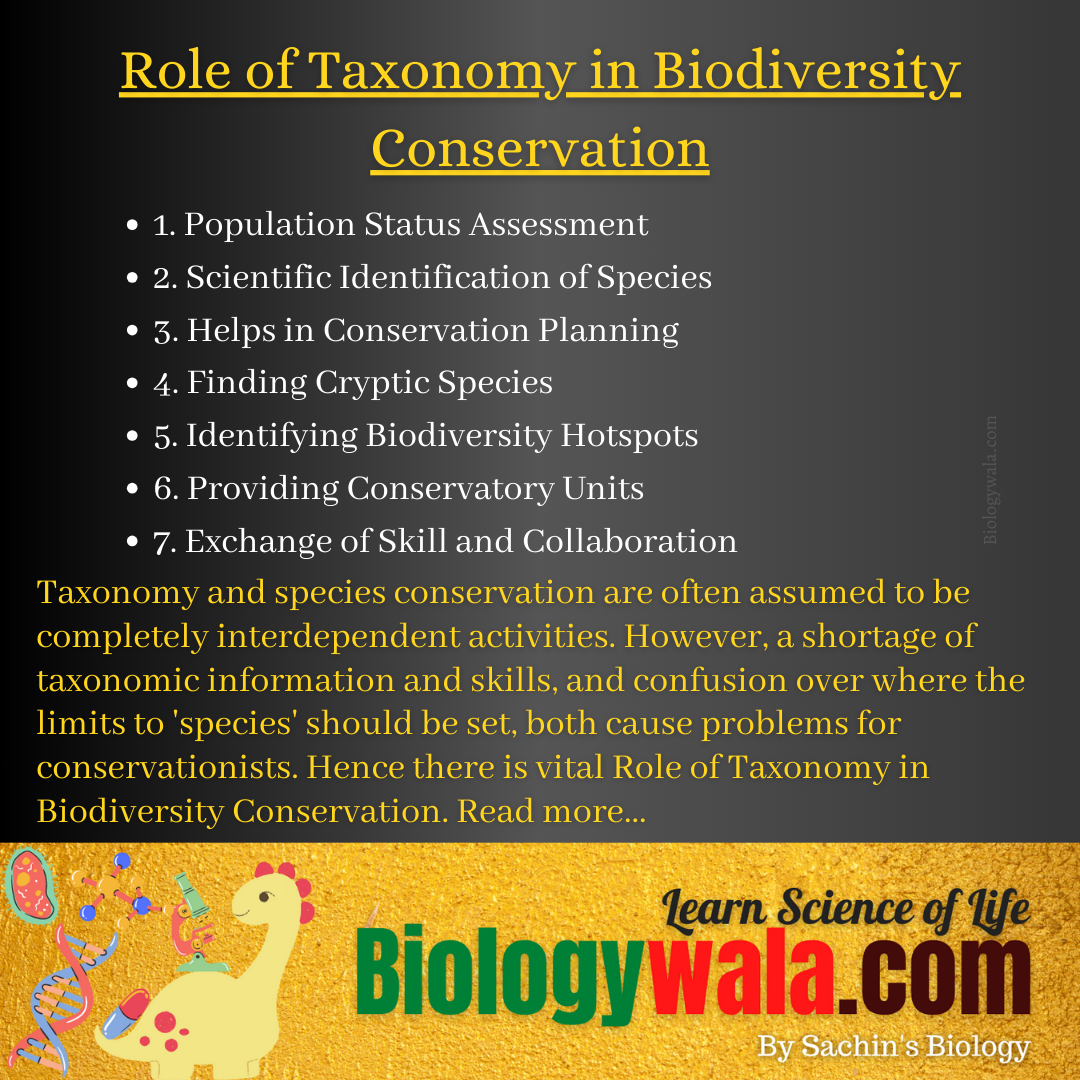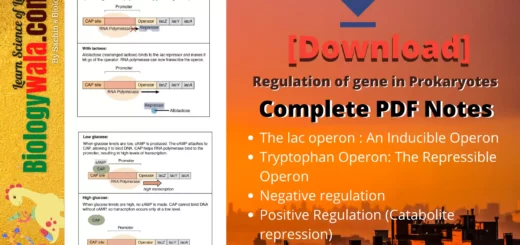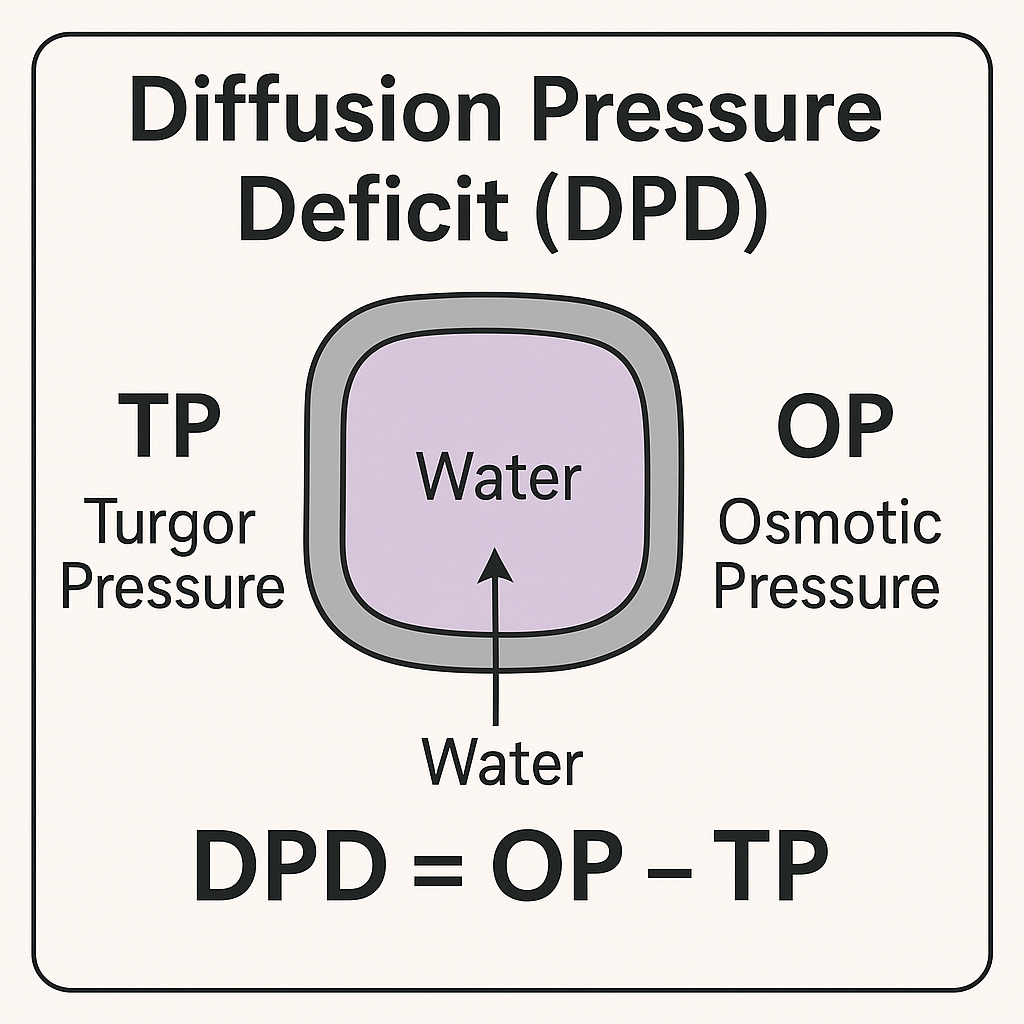Role of Taxonomy in Biodiversity Conservation

Taxonomy and species conservation are often assumed to be completely interdependent activities. However, a shortage of taxonomic information and skills, and confusion over where the limits to ‘species’ should be set, both cause problems for conservationists. Hence there is vital Role of Taxonomy in Biodiversity Conservation.
There is no simple solution because species lists used for conservation planning (e.g., threatened species, species richness estimates, species covered by legislation) are often also used to determine which units should be the focus of conservation actions; this despite the fact that the two processes have such different goals and information needs.
1. Population Status Assessment
Population status assessment involves evaluating the number and distribution of individuals within a species to determine their conservation status, such as endangered or vulnerable. This process is crucial for guiding management and conservation efforts, identifying population trends, and ensuring the survival of species. Methods commonly used include surveys, censuses, mark-recapture techniques, and advanced technologies like GPS and drones for large-scale assessments.
2. Scientific Identification of Species
Scientific identification of species involves classifying organisms accurately based on morphological, genetic, and behavioral characteristics. This practice is essential for precise communication and documentation in scientific research, understanding biodiversity, and detecting new or invasive species. Techniques include morphological analysis, DNA barcoding, and the use of dichotomous keys and phylogenetic trees.
3. Helps in Conservation Planning
Conservation planning leverages scientific data to formulate strategies for protecting species and habitats. This approach prioritizes areas and species for conservation, allocates resources efficiently, and involves stakeholders in decision making. Tools such as Geographic Information Systems (GIS) for mapping critical habitats, population viability analysis, and community-based conservation methods are commonly 1employed.
4. Finding Cryptic Species
Discovering cryptic species, which are morphologically similar but genetically distinct, enhances our understanding of biodiversity and prevents misidentification. It is crucial for accurate conservation status assessments and uncovering hidden diversity within ecosystems. Techniques for identifying cryptic species include genetic sequencing, detailed morphological studies, and ecological niche modeling.
5. Identifying Biodiversity Hotspots
Identifying biodiversity hotspots focuses conservation efforts on regions rich in endemic species that face significant threats. This strategy ensures the preservation of numerous species with limited resources and protects ecosystems that provide essential services to humanity. Methods include biodiversity surveys, remote sensing, GIS mapping, and collaboration with local communities.
6. Providing Conservatory Units
Establishing conservatory units, such as protected areas and facilities, is vital for the conservation of species and their habitats. These units safeguard ecosystems from human activities and environmental changes, support breeding and reintroduction programs, and preserve genetic diversity. National parks, wildlife reserves, botanical gardens, ex-situ conservation measures like seed banks, and captive breeding programs are commonly used methods.
7. Exchange of Skill and Collaboration
The exchange of skills and collaboration among scientists, conservationists, and local communities enhances conservation program effectiveness, builds capacity in under-resourced areas, and fosters innovative solutions. This is achieved through workshops, training programs, conferences, collaborative research projects, field studies, and the use of technology and online platforms for knowledge sharing.
Also Read :
Phycocolloids PDF: Definition, 3 Types, Applications
Algal Cell Culture PDF – Algal Culture And Seaweed Mariculture
Remote Sensing PDF Notes: 2 Types, Application, Principle, Advantages and Limitations
All pre-Ph.D. Notes
Join SACHIN’S BIOLOGY on Instagram or Facebook to receive timely updates and important notes about exams directly on your mobile device. Connect with Mr. Sachin Chavan, the founder of Sachin’s Biology and author of biologywala.com, who holds an M.Sc., NET JRF (AIR 21), and GATE qualifications. With SACHIN’S BIOLOGY, you can have a direct conversation with a knowledgeable and experienced.


